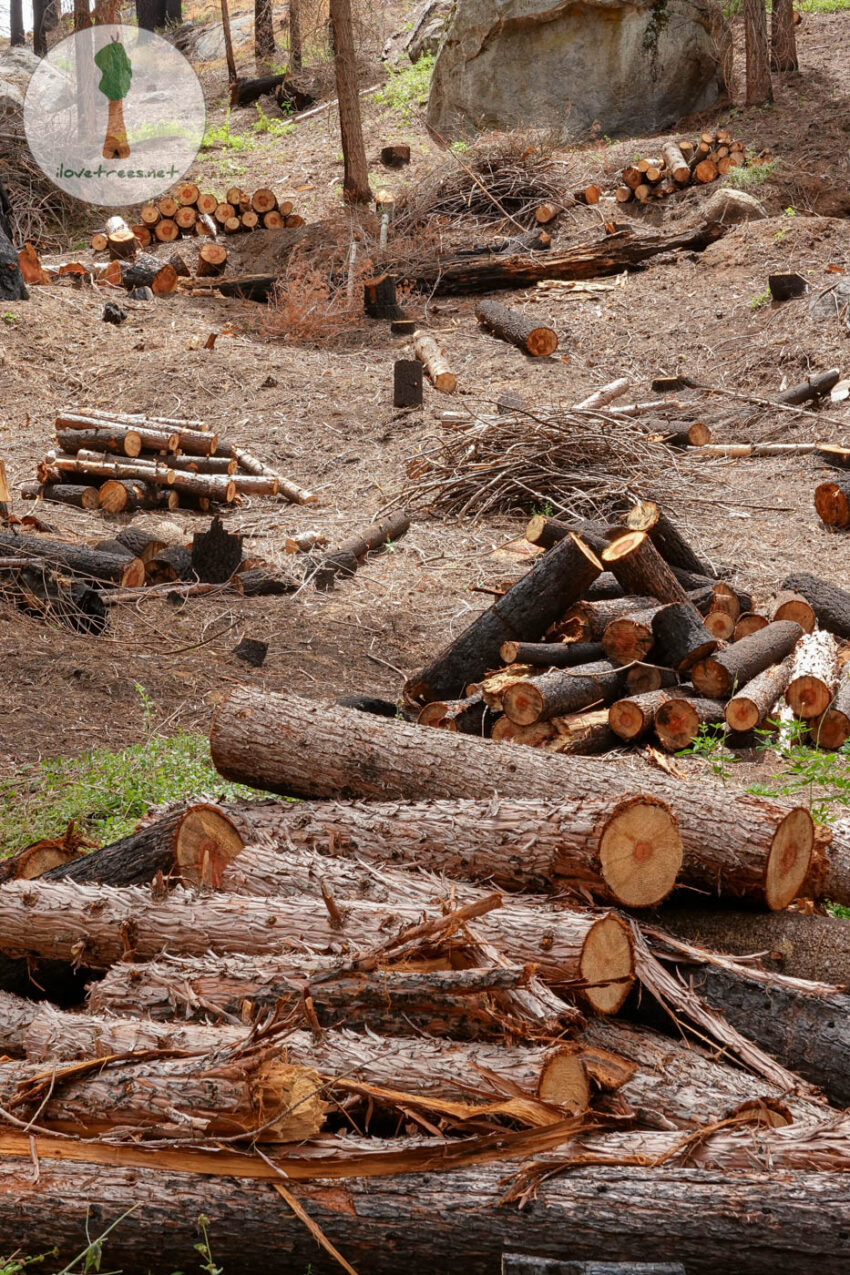Featured image: Sequoias Cut Down by Save the Redwoods League
July 2025: Save the Redwoods League covertly chopped down all of their planted sequoia seedlings that failed and died and replaced them with new imported sequoias in the clearcut area, southeast Alder Creek Grove. People who didn’t see the brown, dead seedlings may not realize that they did this and will be fooled by the newly planted, bright green seedlings/saplings. (Sadly, most natural seedlings have been killed by SRL’s relentless logging and burning.)
April 2024: Save the Redwoods League receives a $2.2 million handout from the state of California to continue logging Alder Creek and to start logging the Freeman Creek sequoia grove. The money comes from taxpayers who purchased environmental license plates.
September 2023: Save the Redwoods League is actively clearcut logging upper Long Meadow Grove and will be begin logging Packsaddle Grove next.
August 2023: Save the Redwoods League continues cutting down 70-year-old sequoias and other living conifers in Alder Creek Grove and has announced that it will be logging the Forest Service portion of the grove next.
July 2023: Save the Redwoods League is spraying glyphosate (Roundup) across the mountain slopes of Alder Creek.
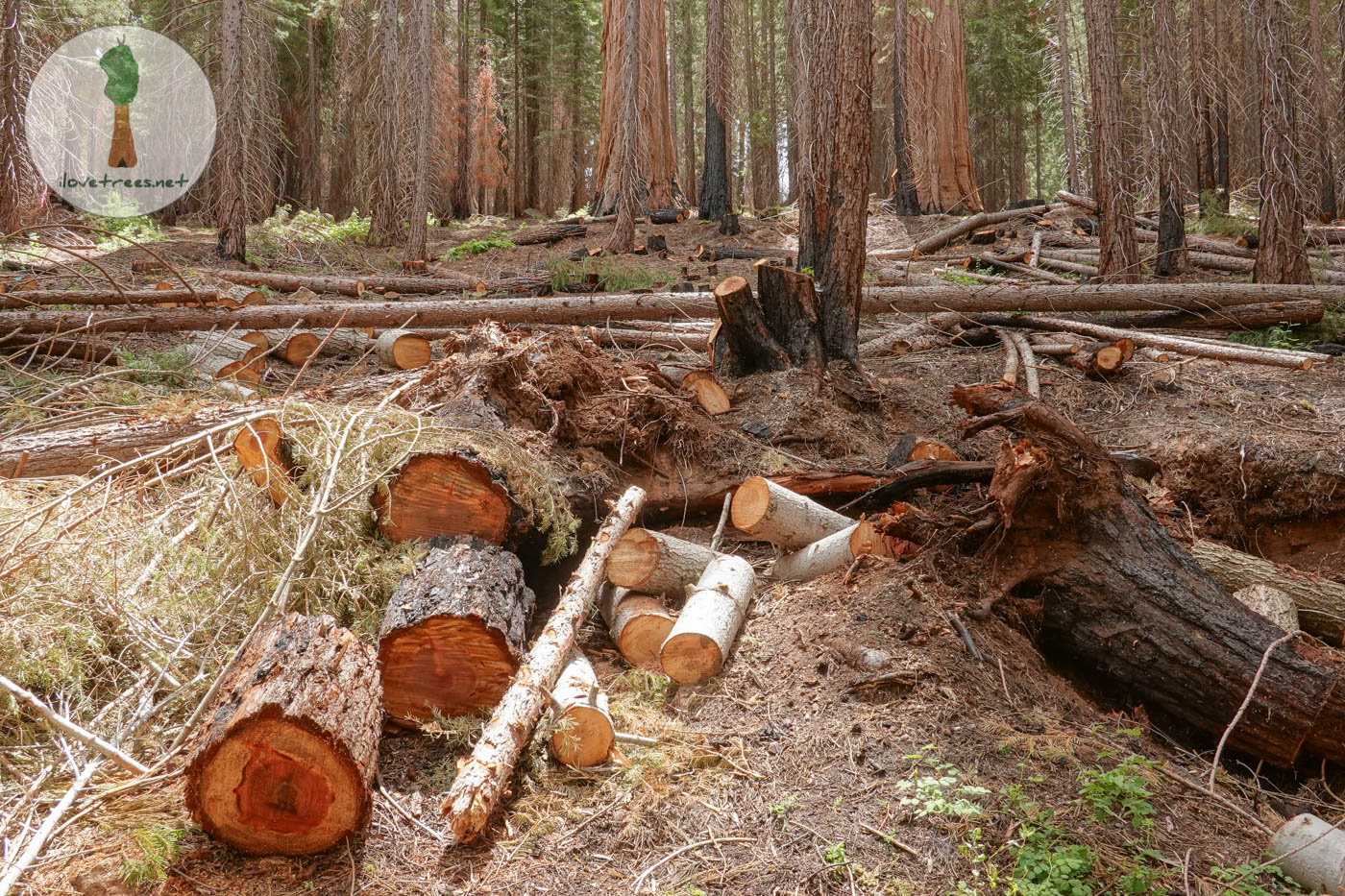
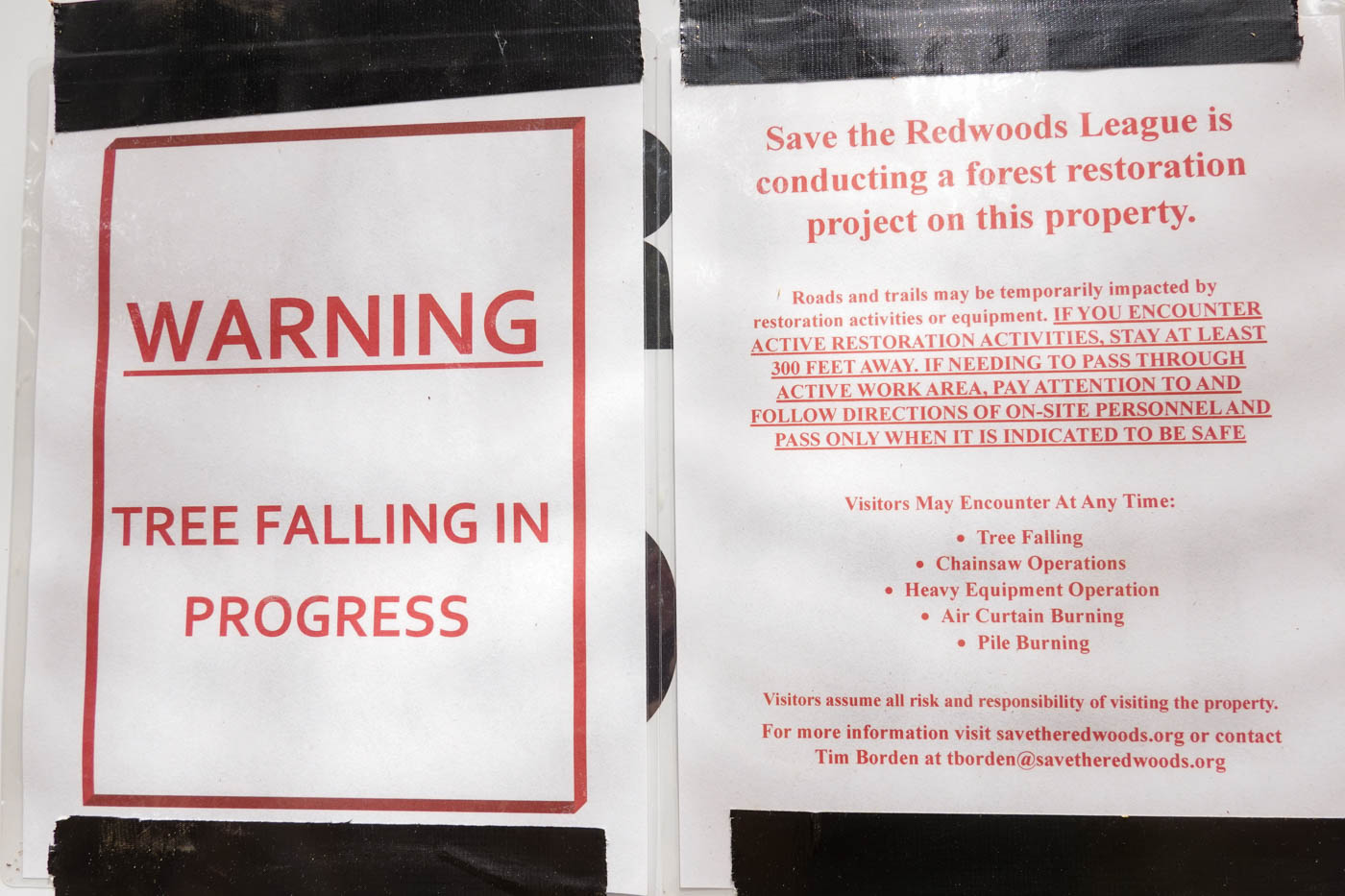
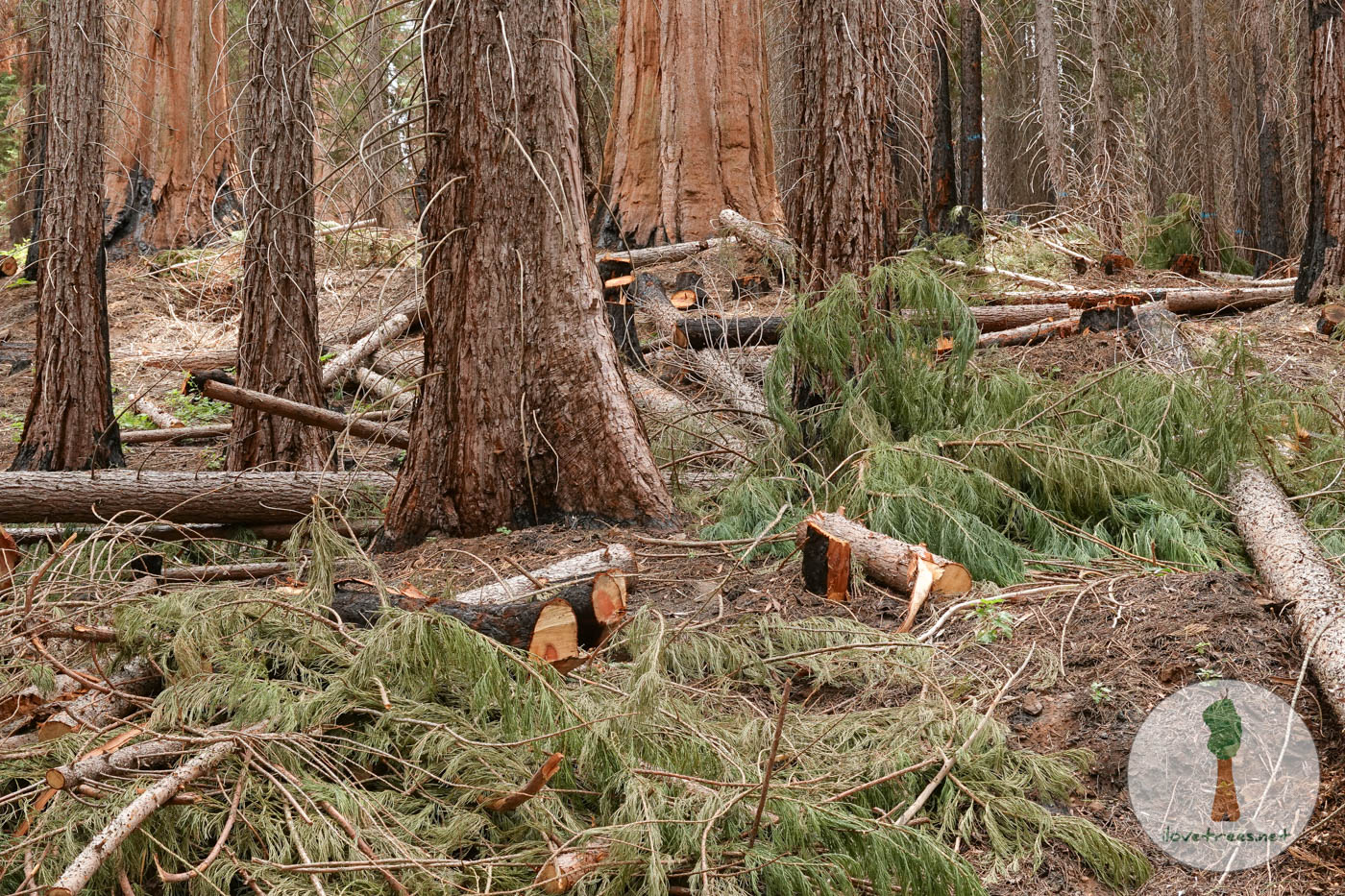
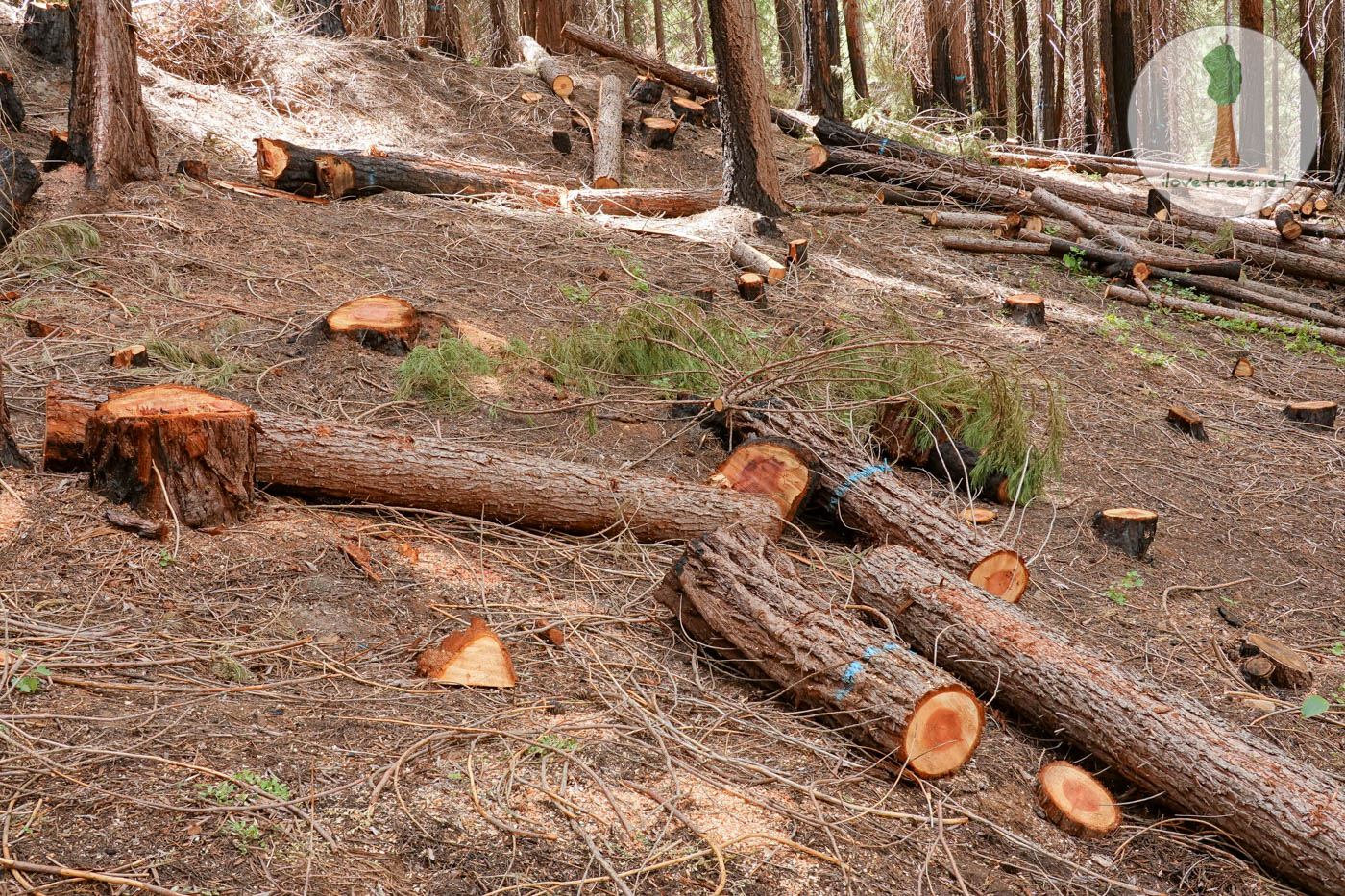
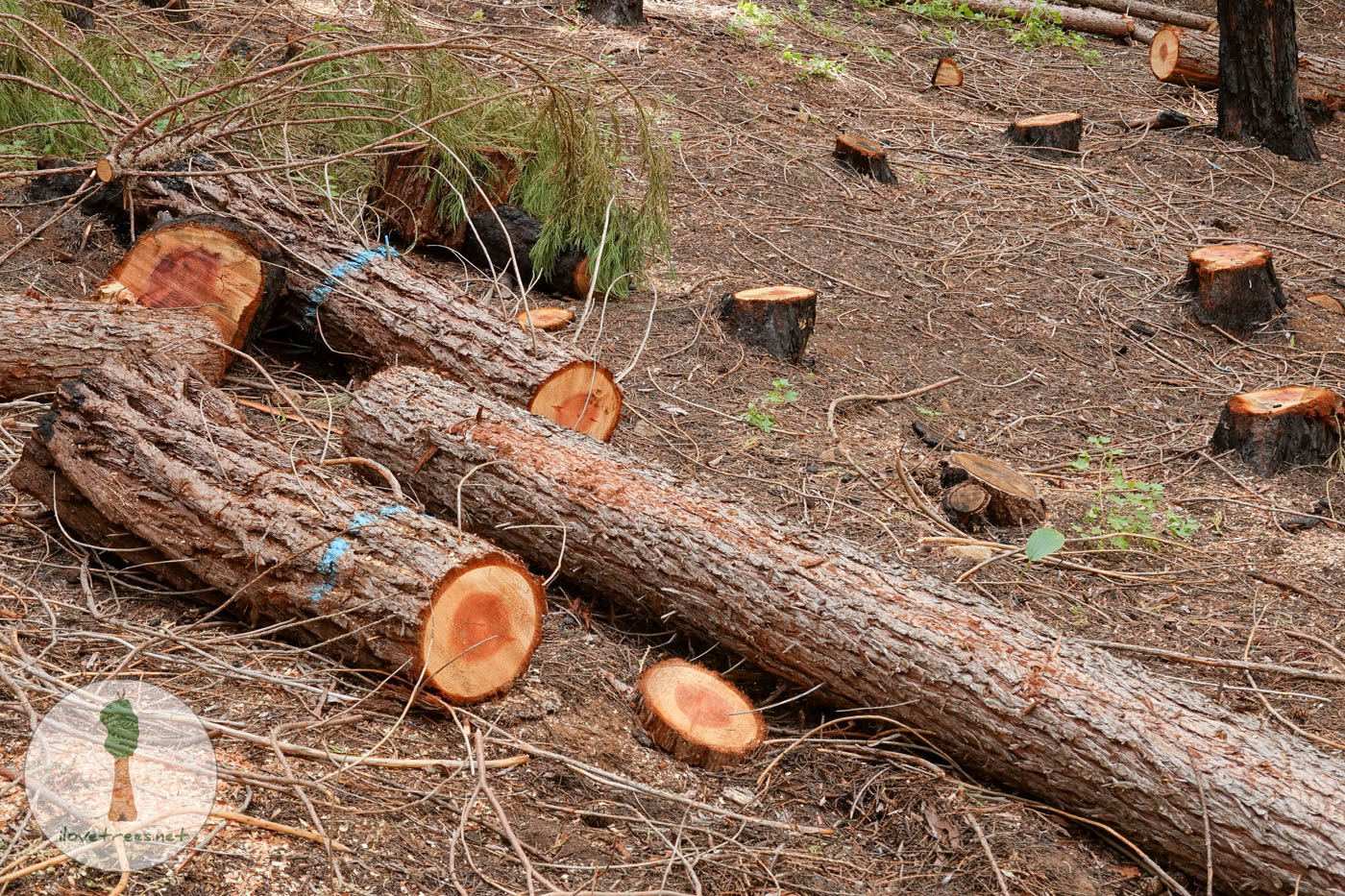
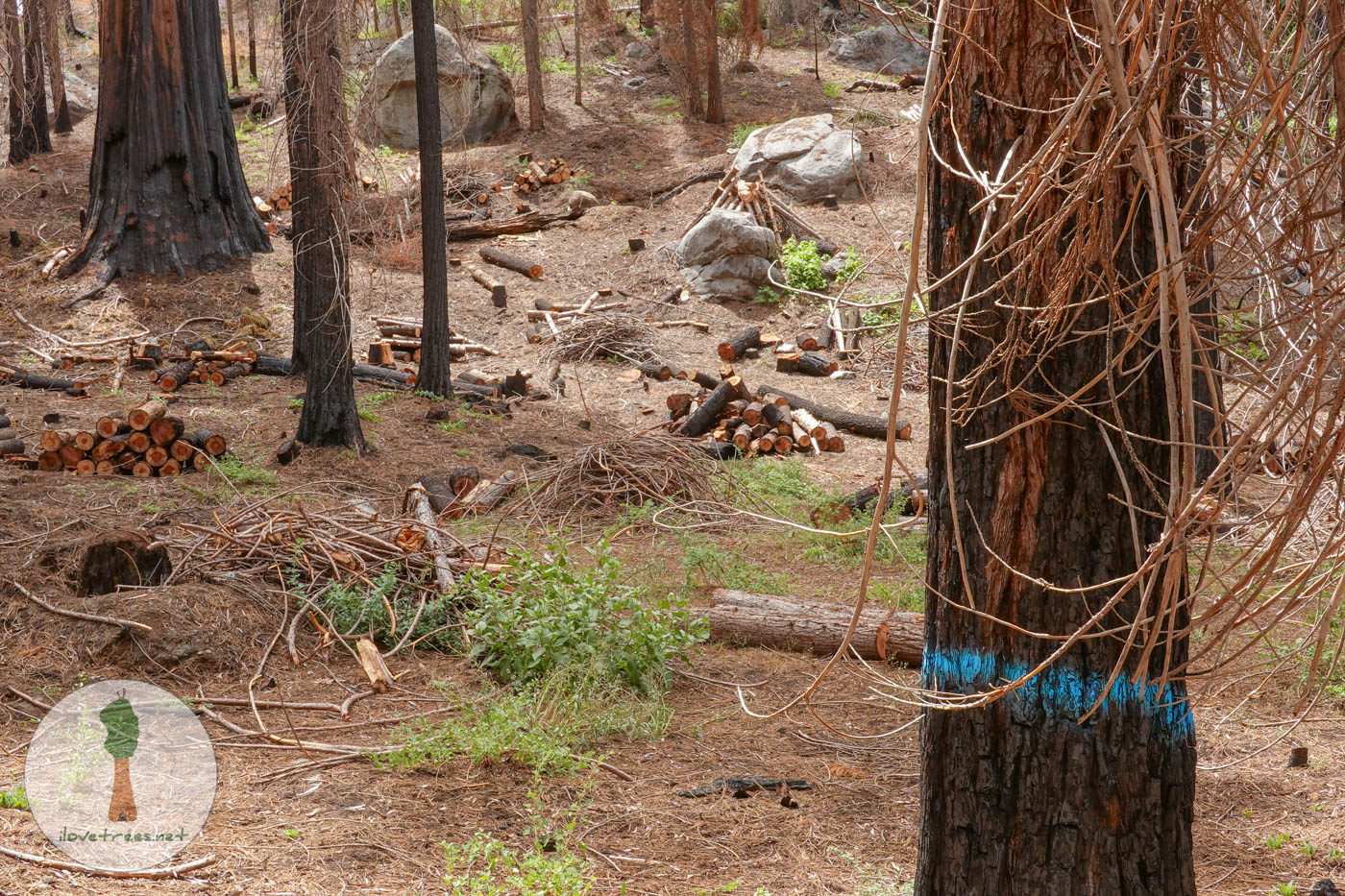
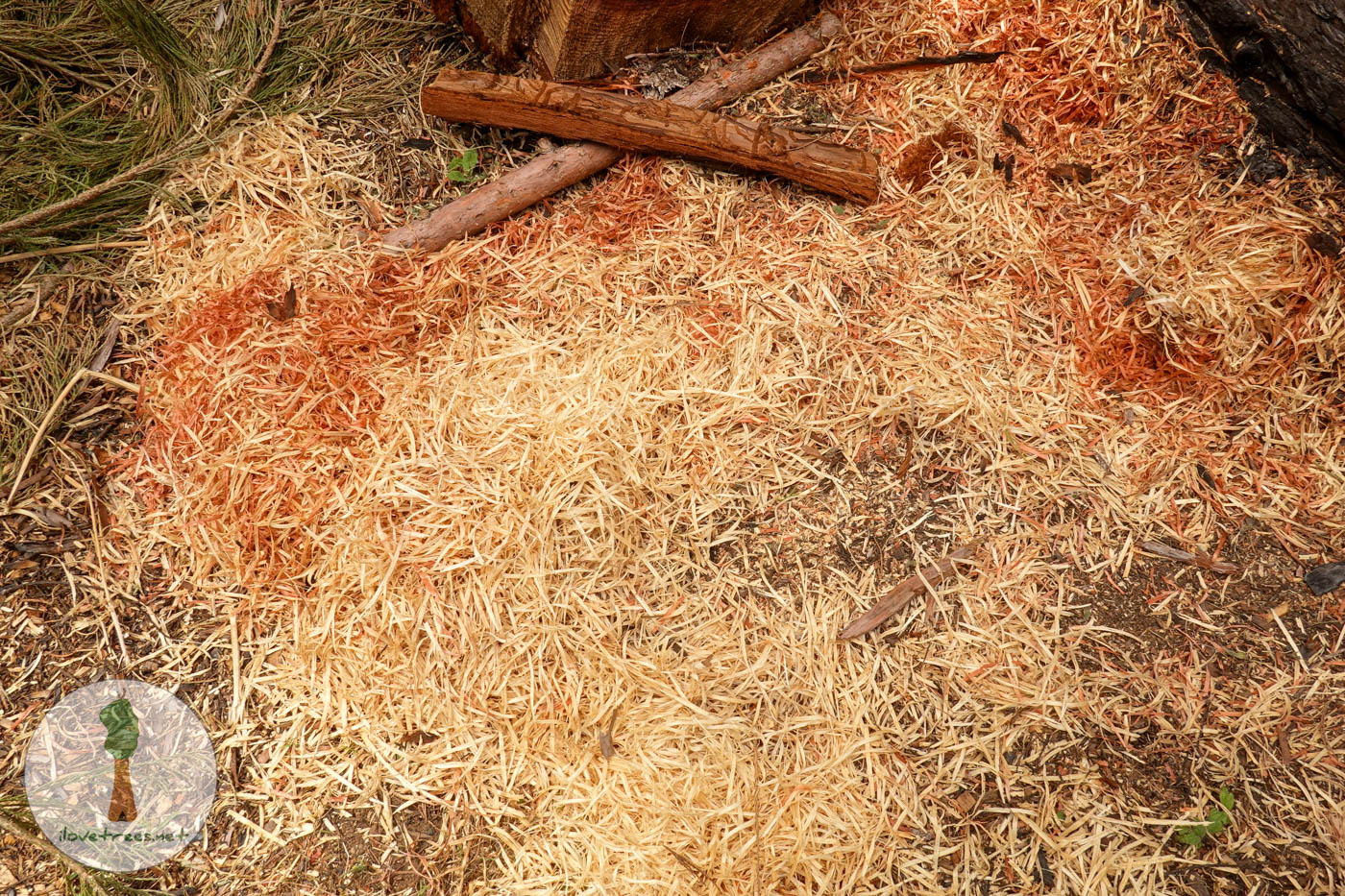
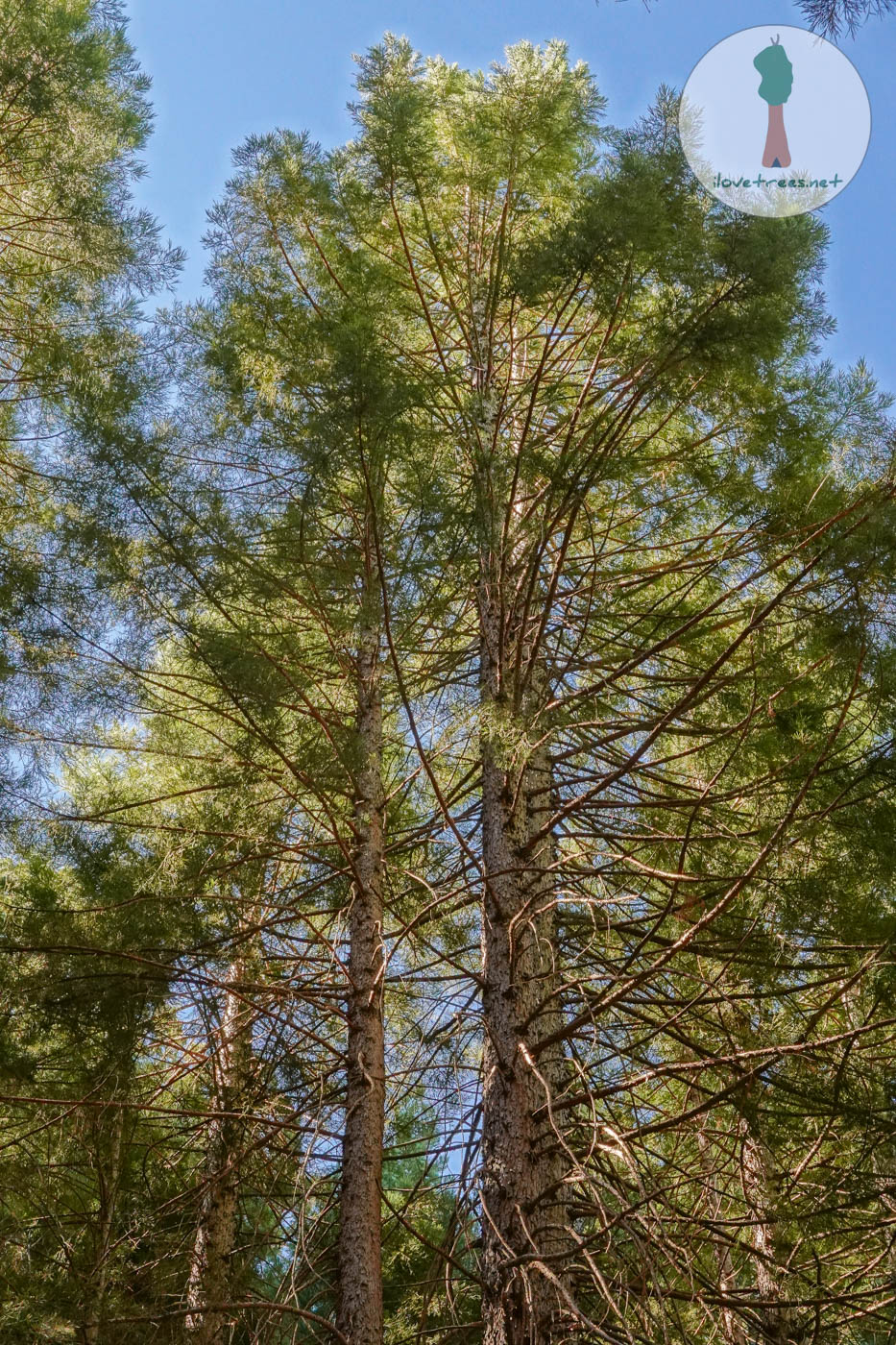
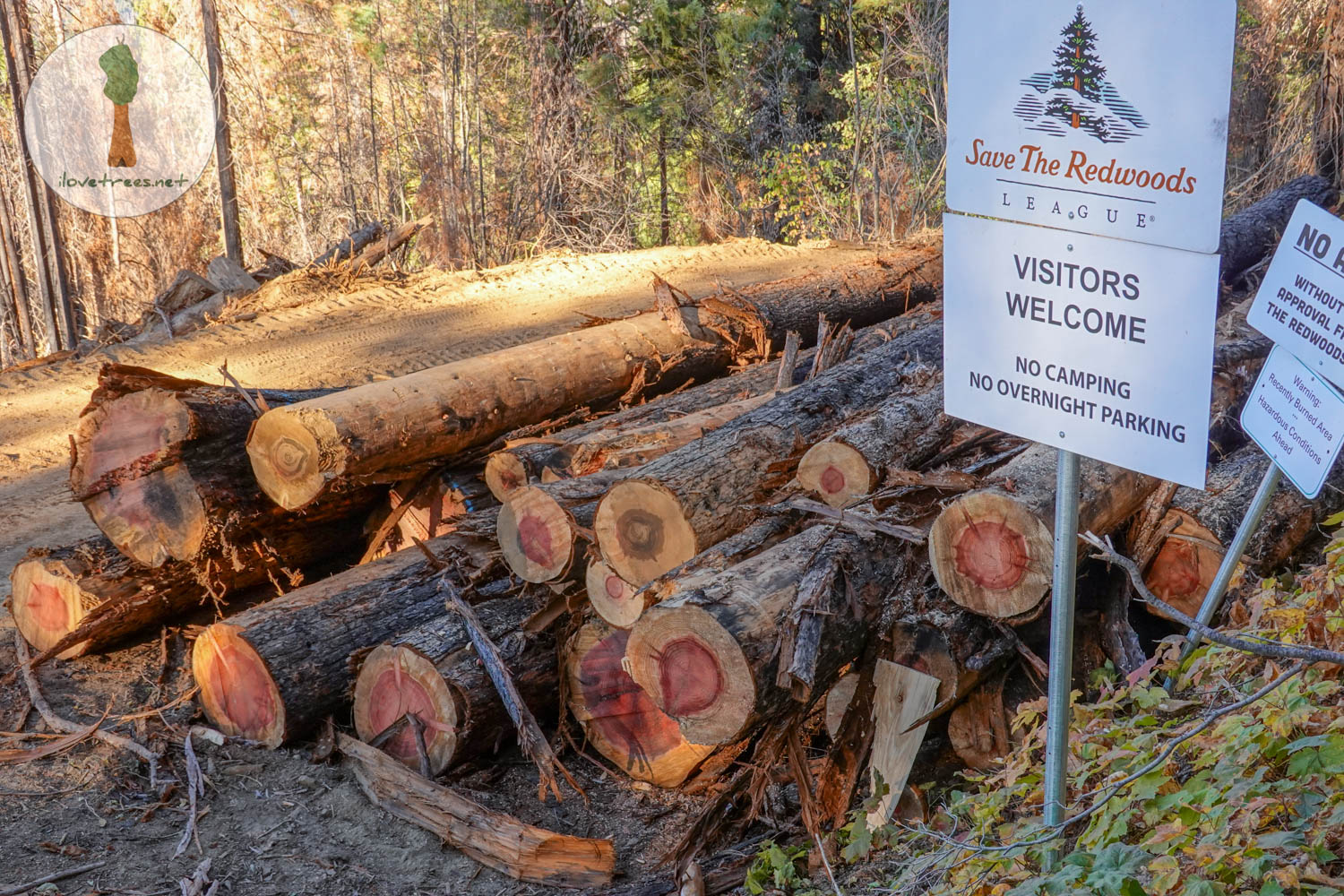
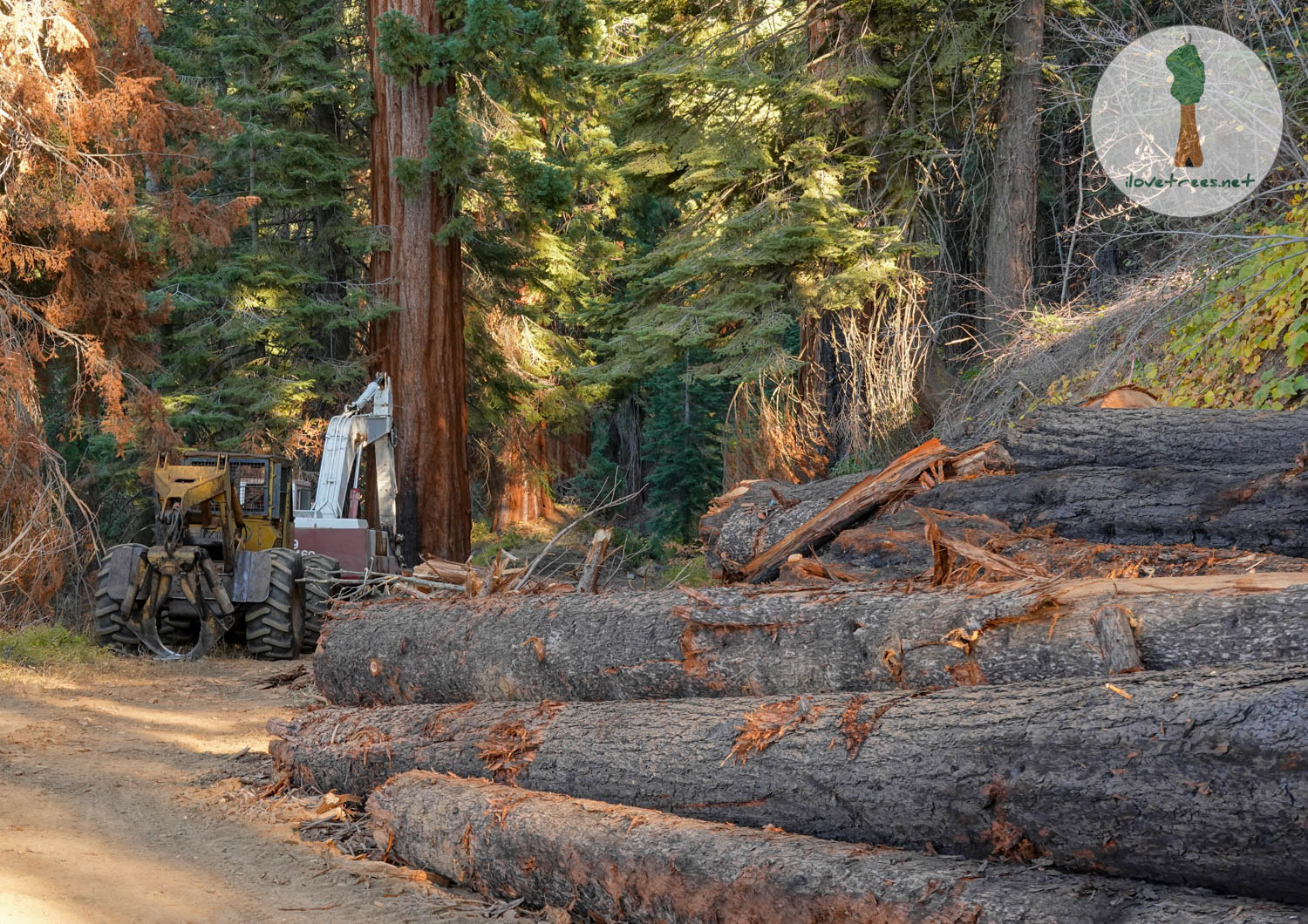
Video: Save the Redwoods League Clearcut Logging
Save the Redwoods League began logging the Alder Creek sequoia grove during the summer of 2021. The League’s operations have included the clearcutting of a vast swath of forest. The torn apart and bulldozed earth looks like a war zone. As of June 2023, they’ve made $800,000 in profit from the sale of these trees, yet they continue to erroneously claim that they are not commercially logging the forest. Their stated intention from the outset was to log 2 million board feet. Like something out of our regrettable past, huge logging trucks piled high with trees exit the forest, one after another. In addition, thousands of natural sequoia seedlings vital to the grove’s longevity have been killed by the League’s heavy machinery and post-logging burning.
As of summer 2023, hundreds of new trees have been marked for the chainsaw. Fresh spray paint adorns the trunks of numerous conifers, including verdant young giant sequoias. A plantation has been started in the League’s huge clearcut, with hormone-filled greenhouse plants set to permanently destroy the grove’s unique genetics, if they survive. Wide-spread spraying of toxic glyphosate (Roundup) occurred in July 2023, killing native plants and poisoning waterways and wildlife.
Save the Redwoods League has a long history of green-washing and thwarting forest protection. After being established by leaders of industry who were heavily invested in logging, their actions resulted in the loss of the majority of coast redwood trees. At the time, they distracted the public by “saving” tiny parcels while swaths of pristine forest were purposely destroyed. They are a PR firm with media efforts that continue to dupe the public to this day – this time destroying the rare giant sequoia forest ecosystem.
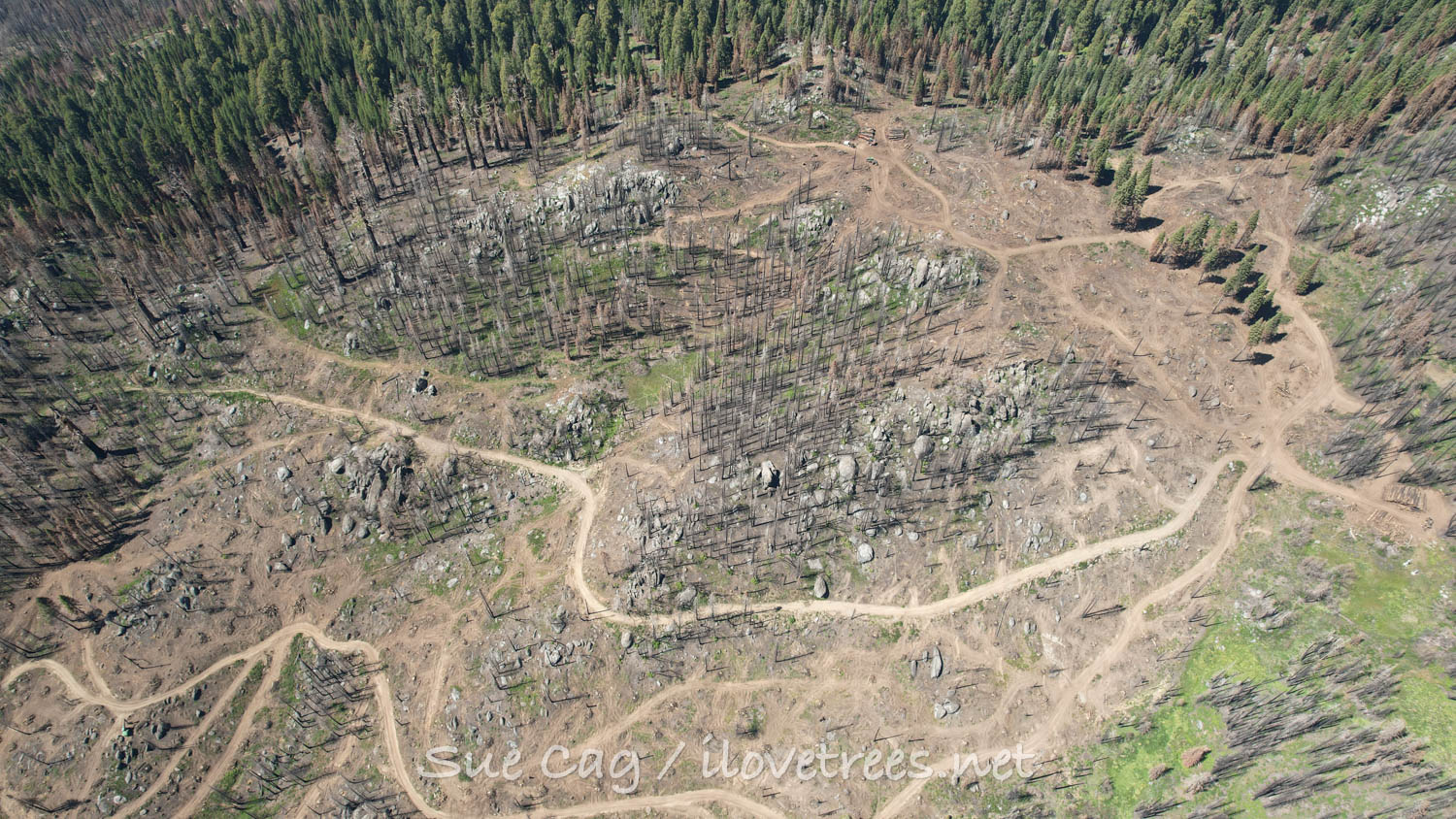
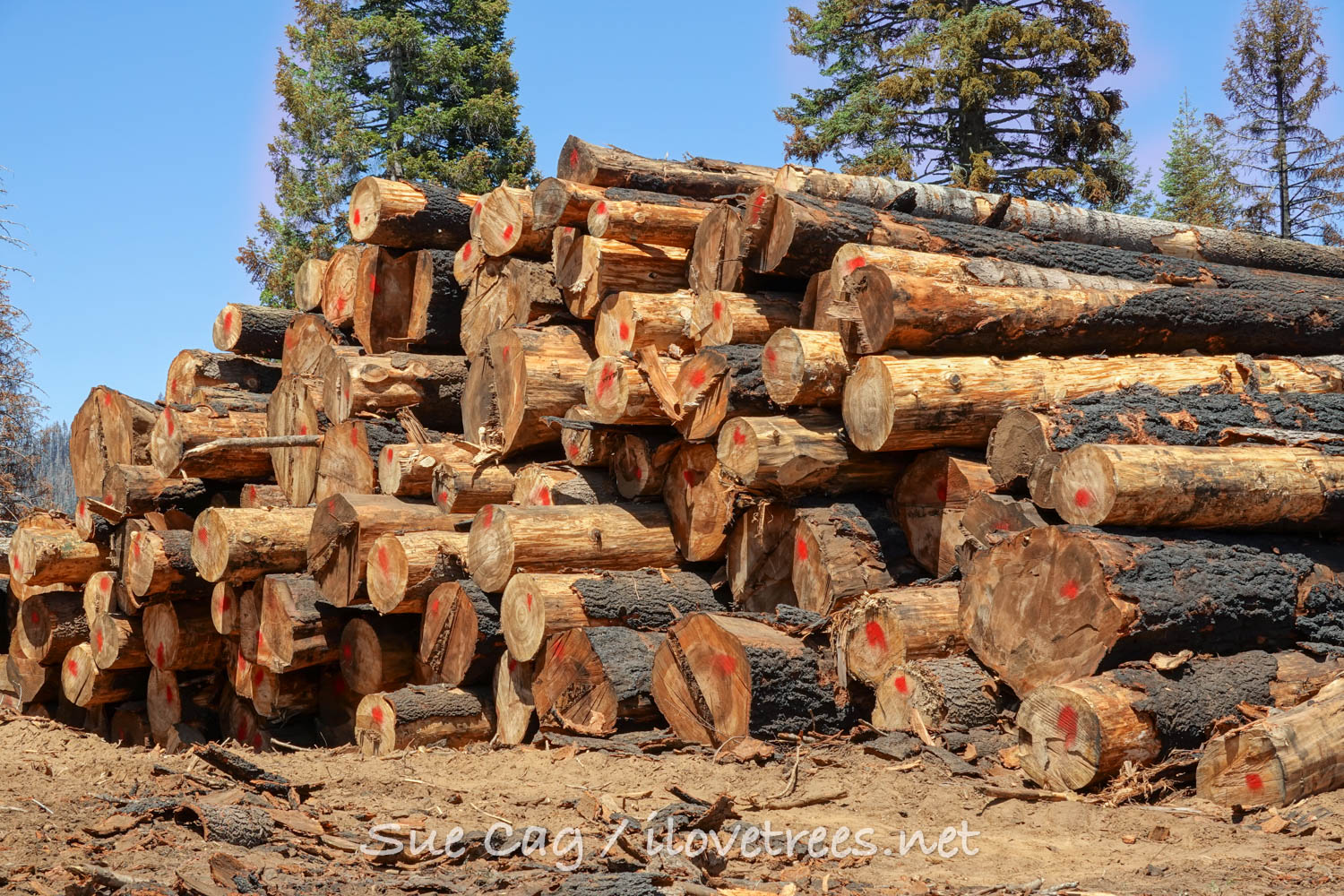
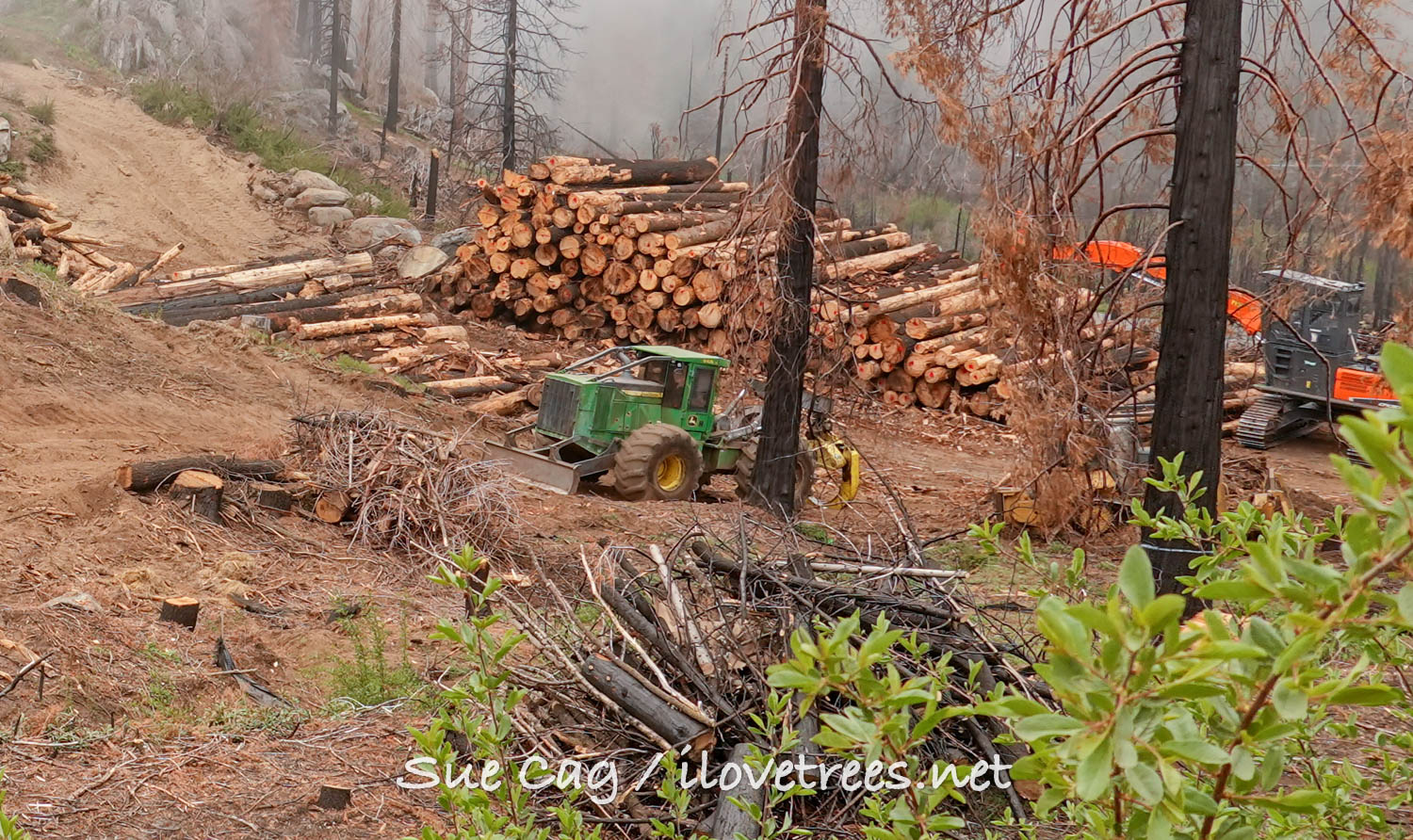
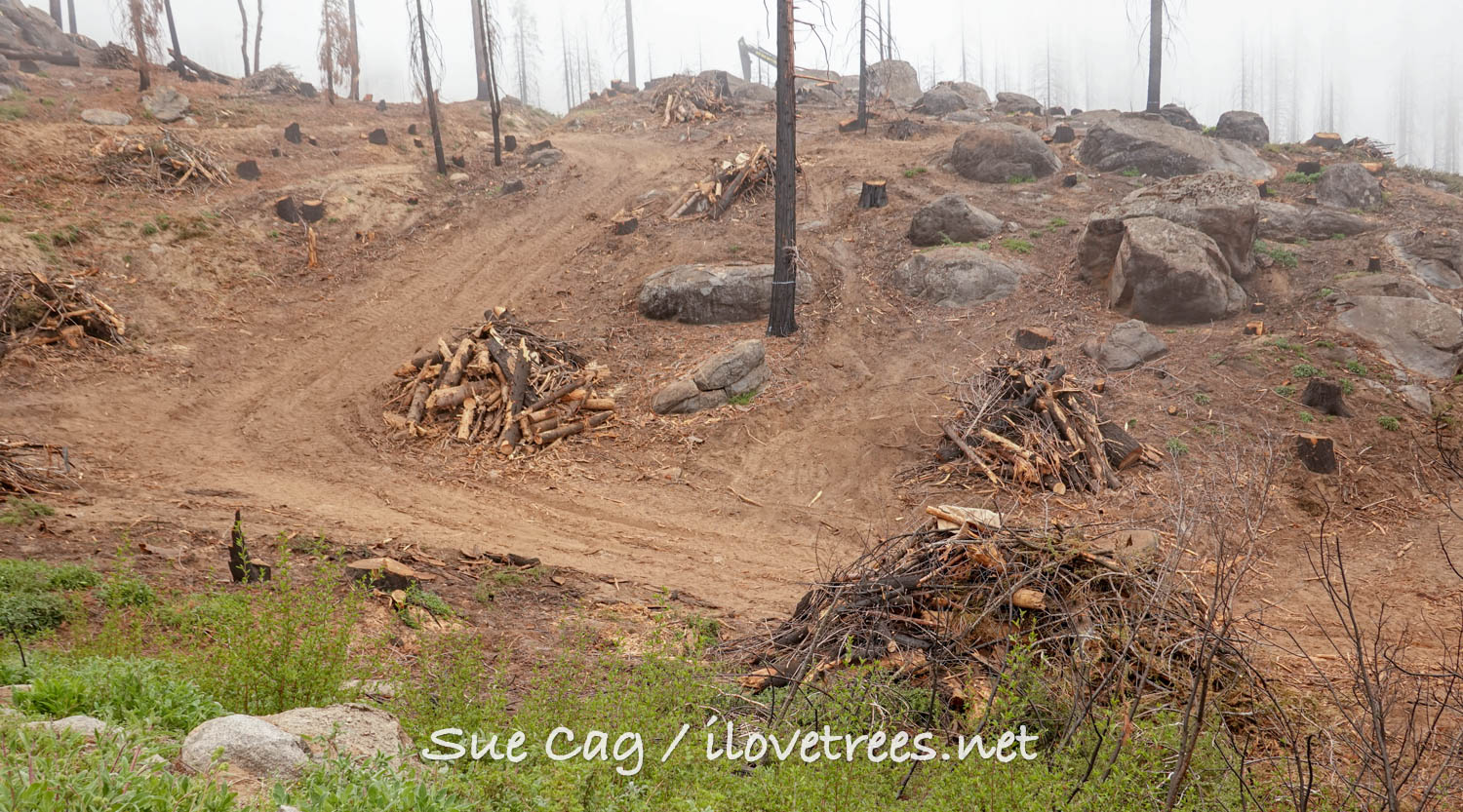
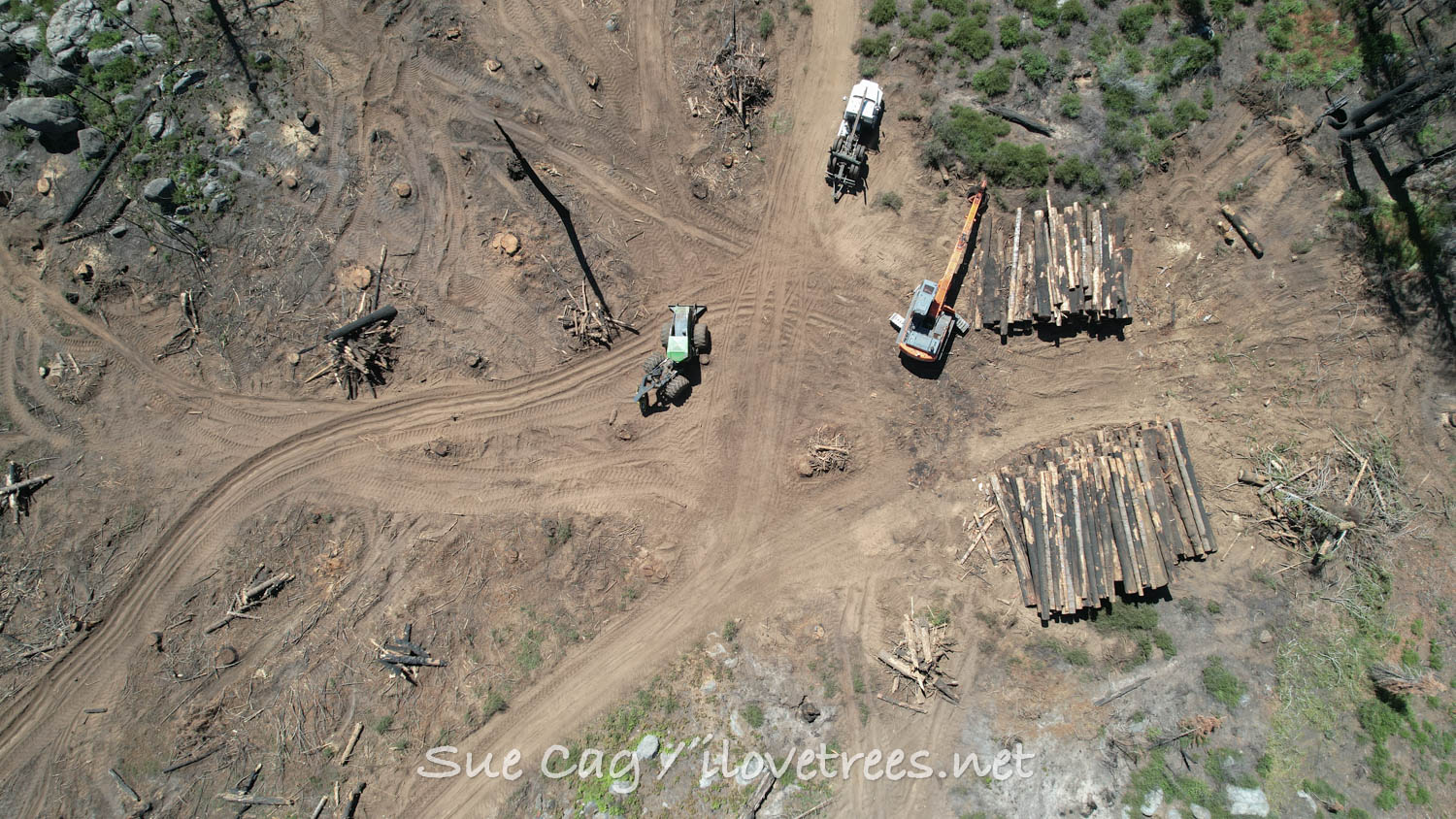
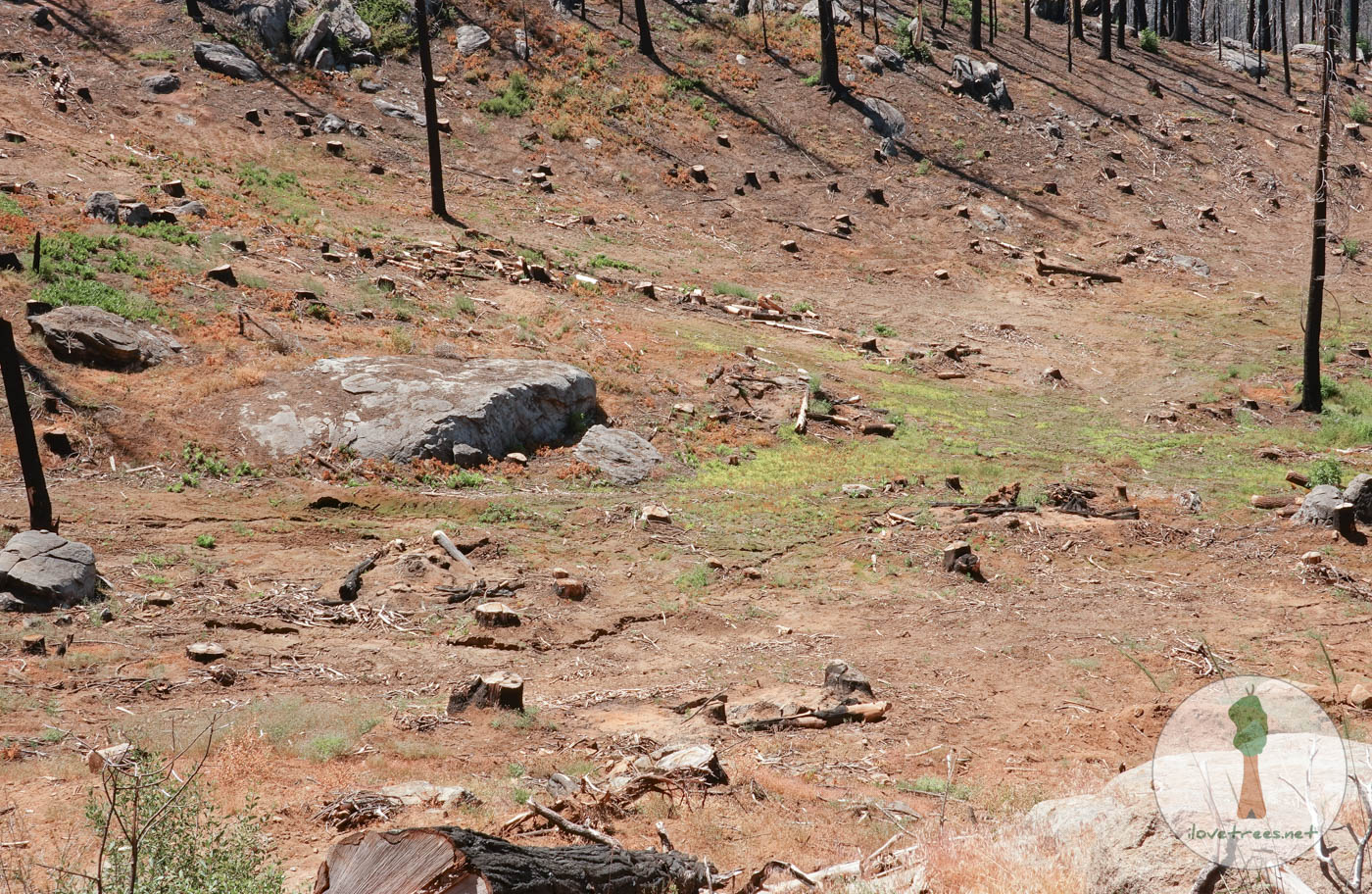
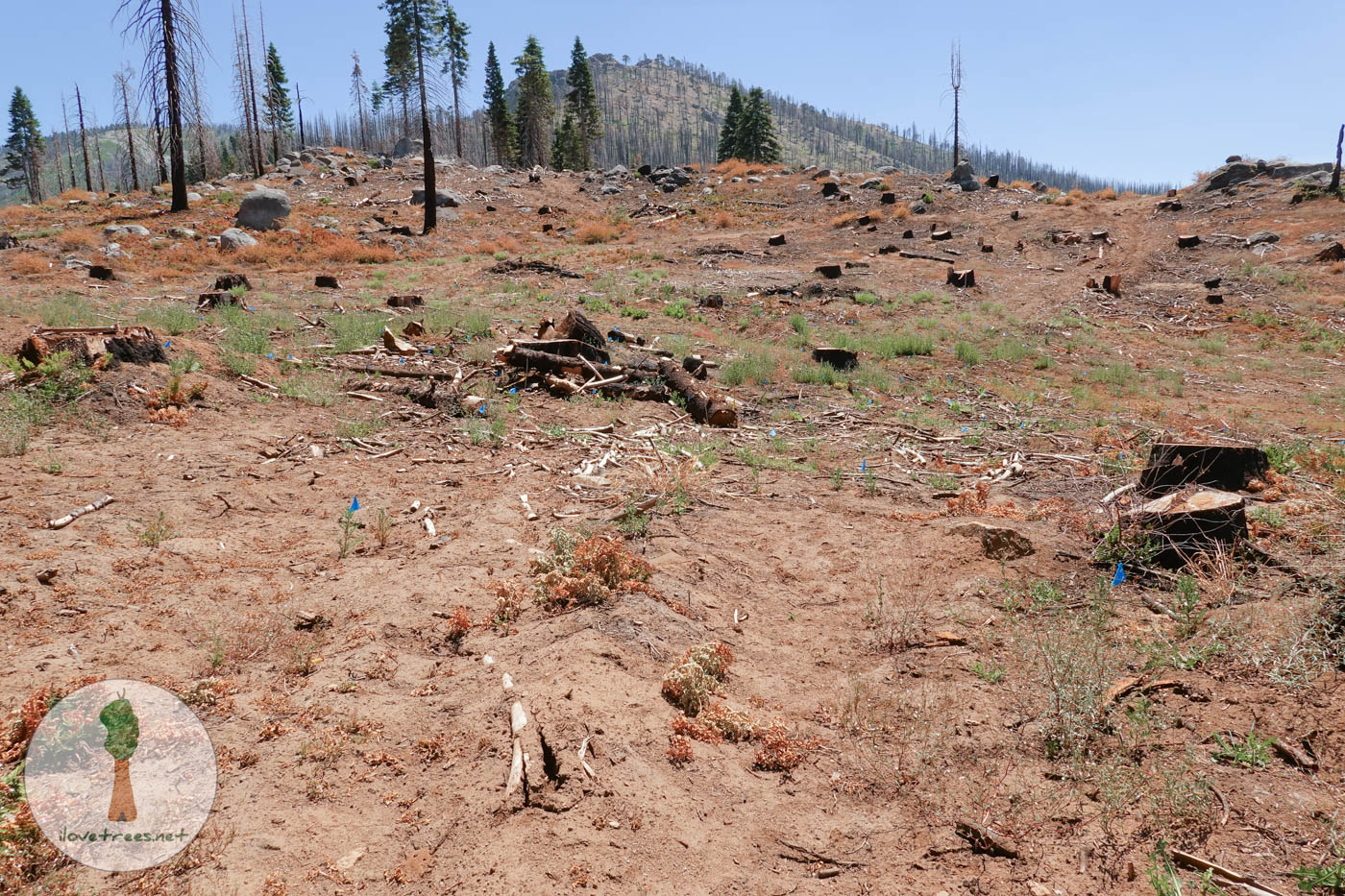
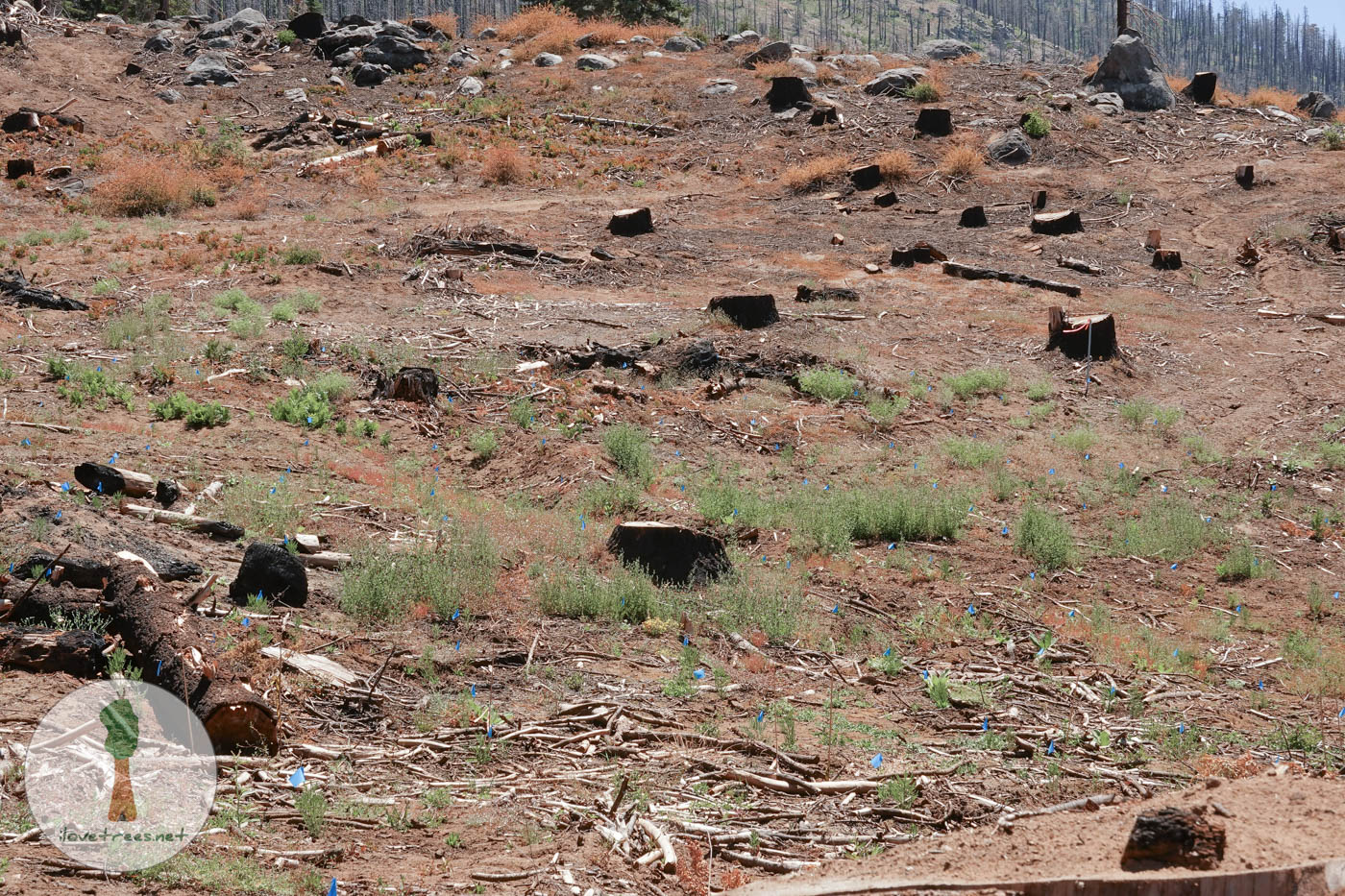
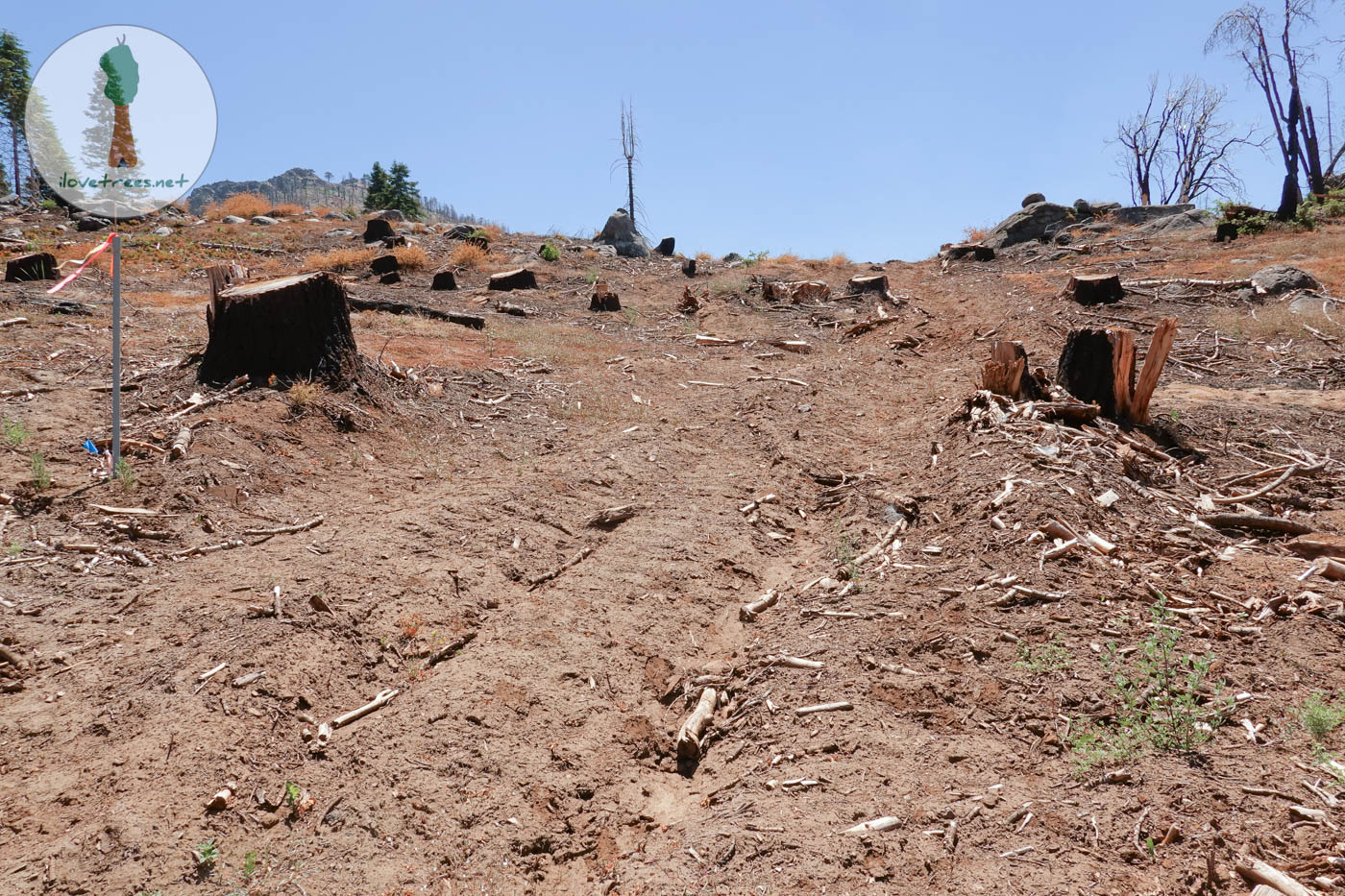
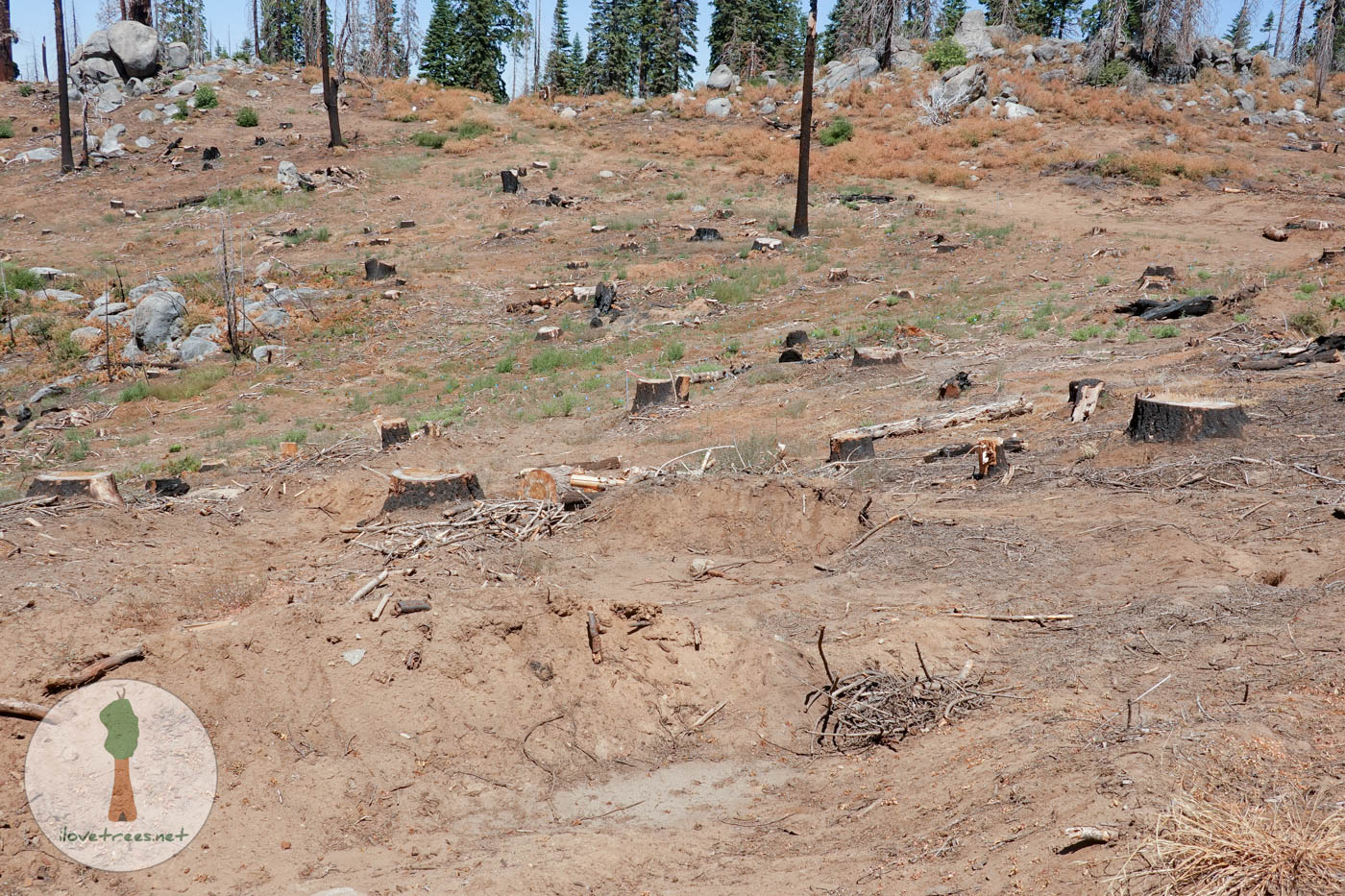
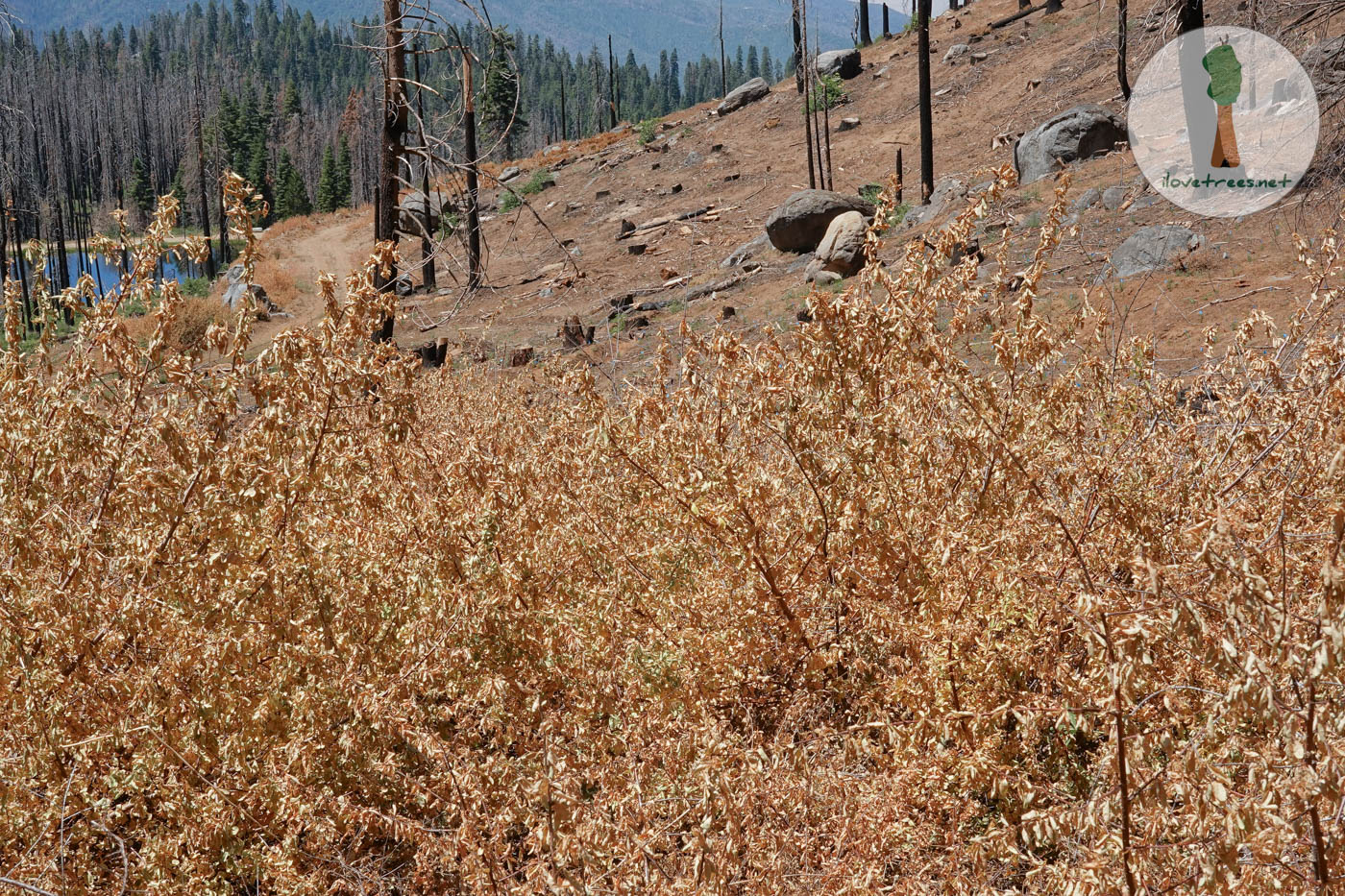
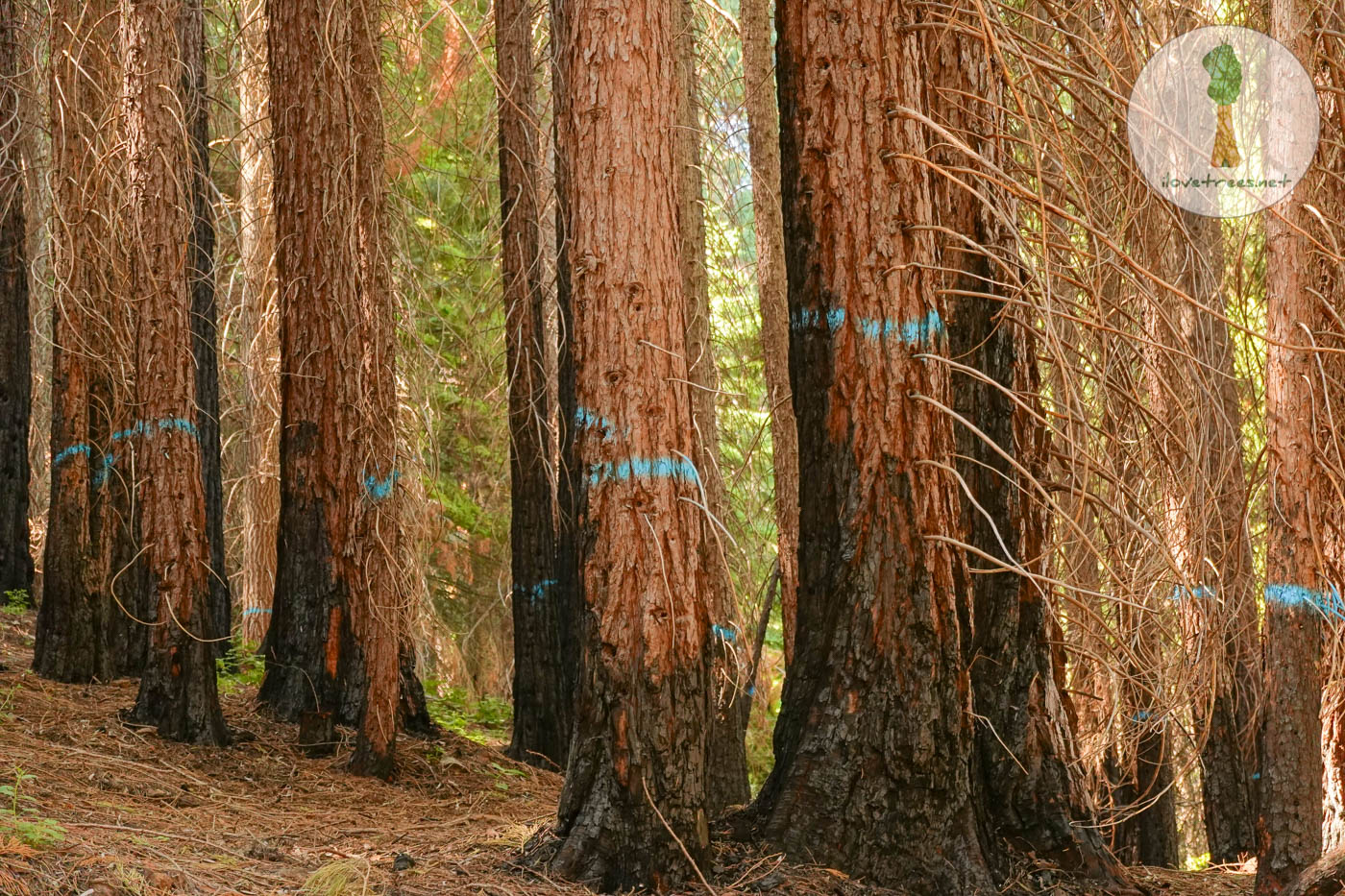
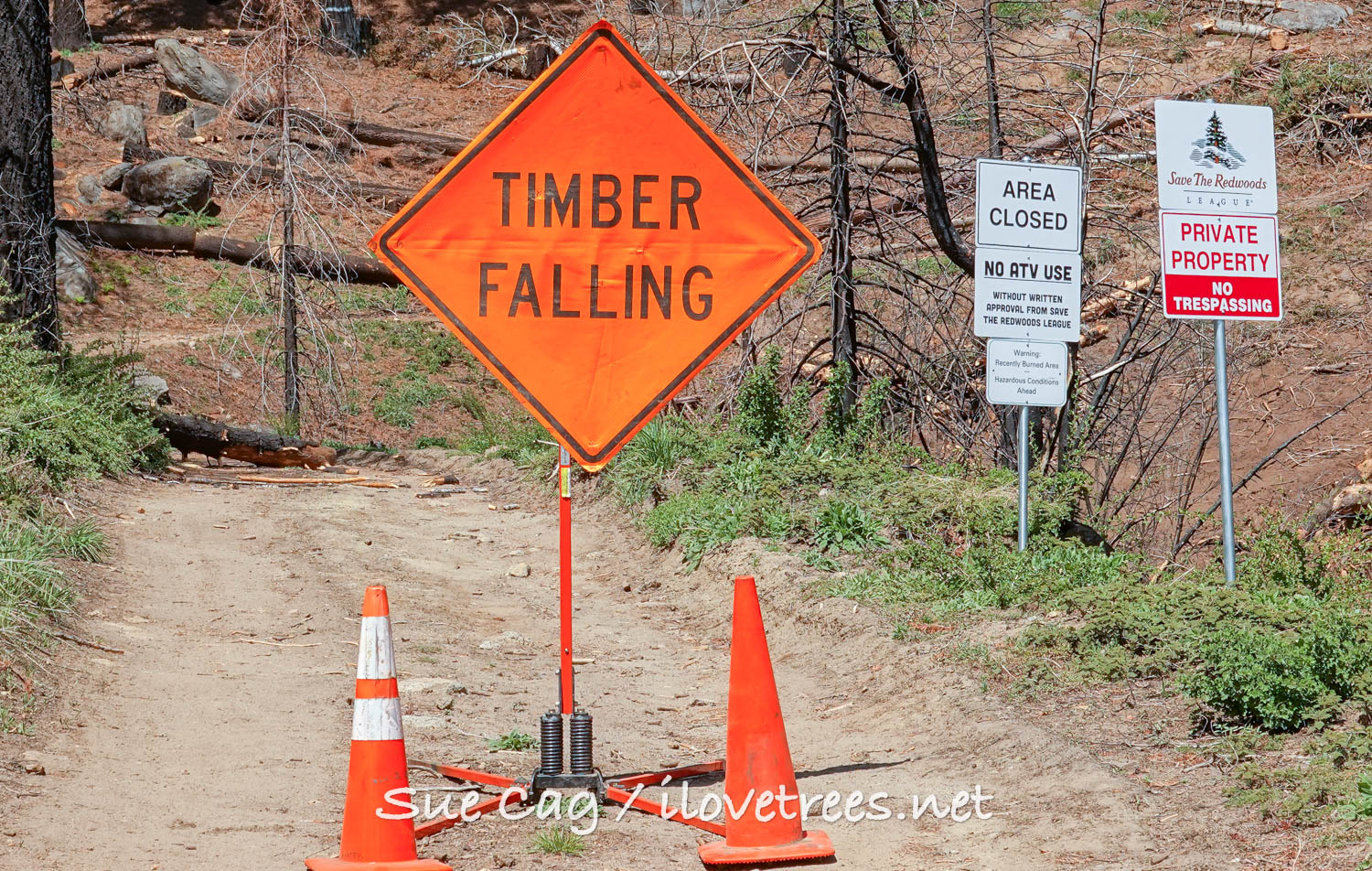
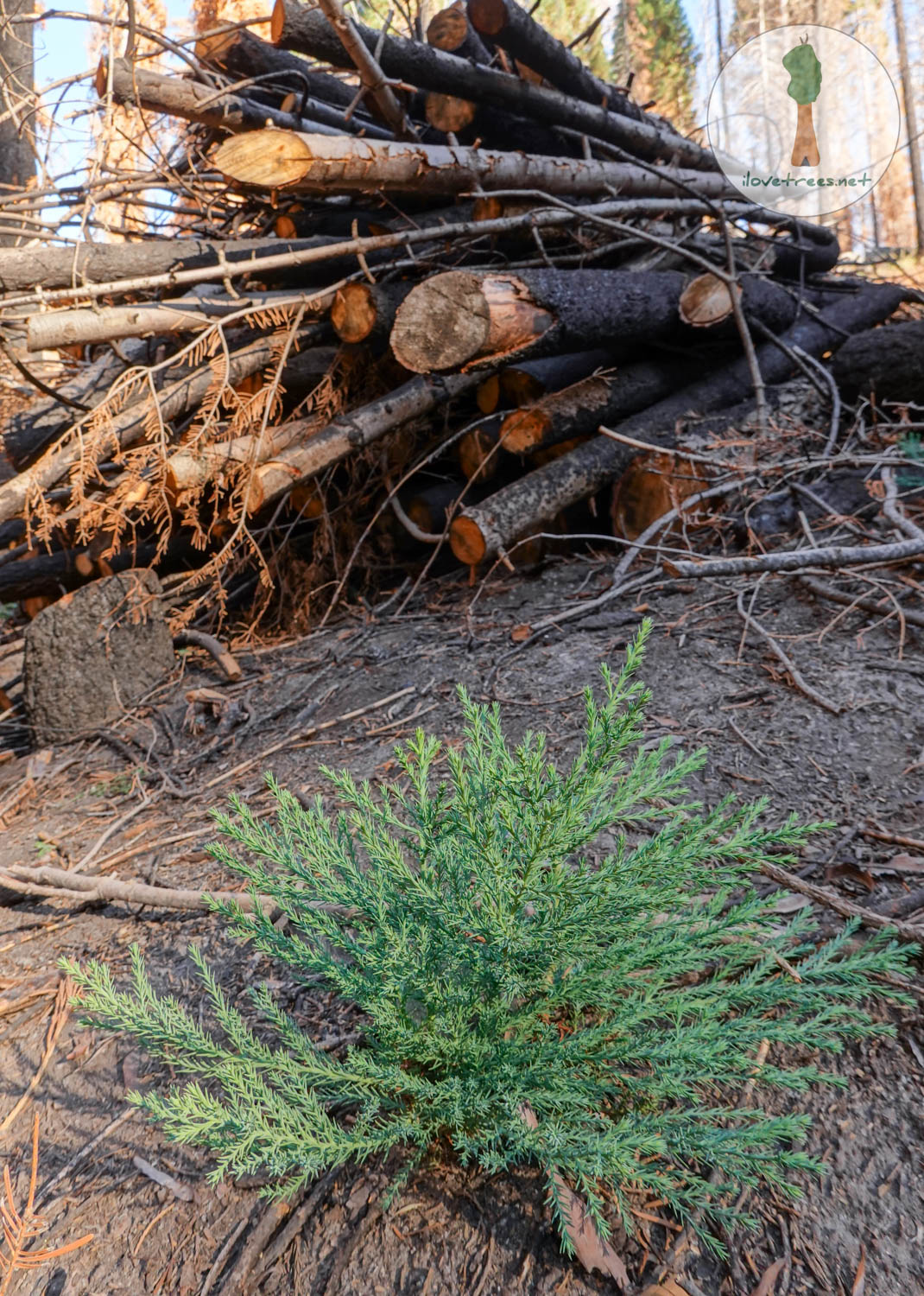
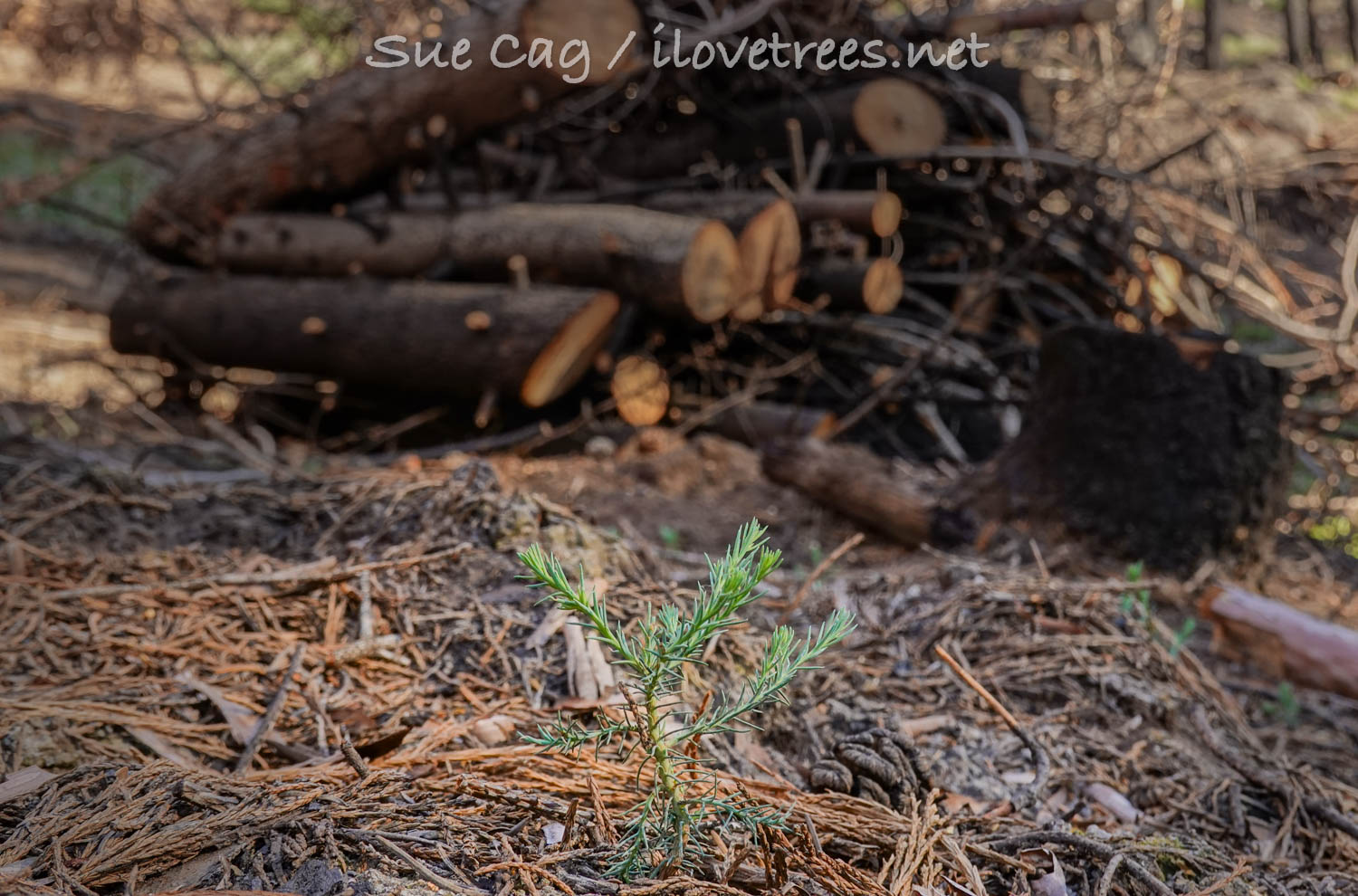
Where is this happening? (last updated 2022)
The major clearcutting is in the southeastern portion of the grove owned by Save the Redwoods League. More cutting is happening throughout the northwestern portion of SRL land, as well as at the end of Chinquapin Road and at the top of FS Road 20S03. Most people who visit Alder Creek only go to the Stagg Tree which is located in the northeast corner of the grove. Trees are marked in that general area for future cutting, but the current activity is happening largely out of sight. To see it for yourself, start at the south end (upon entering Sequoia Crest) and head east at an obvious neighborhood clearcut. Here are coordinates:
Largest clearcut: 36.18075, -118.62573
More sequoia seedlings being destroyed: 36.18421, -118.62862
Here’s a quick list of what’s not right about Save the Redwoods activities (last updated 2022):
– Logging an ancient sequoia grove repeats the tragedies of the past and shows how little we’ve learned from past mistakes.
– All natural sequoia seedlings have been bulldozed and/or burned by SRL, along with other tree species’ seedlings. Thousands of seedlings were killed.
– Natural seedlings would have flourished if SRL wasn’t logging their land.
– All conifers are being logged including smaller sequoias (and red fir).
– Logging increases climate change by disturbing the carbon sequestered in these trees.
– Logging directly increases temperature *heat* in a world already too hot by removing the trees that are filtering the hot sun.
– Logging directly increases drought by removing trees and logs that trap moisture and shade, and the soil dries out because it is fully exposed to the sun.
– Increases runoff – since trees and logs are no longer there to hold water, it washes away, leaving no moisture or nutrients for remaining trees or new growth.
– Increases erosion – since trees and logs are no longer there to grip the soil on steep slopes, the earth crumbles away, nutrients are stripped, and mudslides are common.
– Increases wind due to the removal of natural windbreaks. Wind drives wildfire and dramatically increases its severity.
– Roads are built and all corners of the forest are bulldozed, stripping and compacting the soil, and destroying all life.
– Logging destroys the forest ecosystem which will never return as it once was.
– In areas impacted by fire, the forest will recover on its own, in its own time, despite our hubris.
– Logging destroys all wildlife habitat, including bear, mountain lion, bobcat, coyote, fox, deer, peregrine falcon, goshawk, grouse, and spotted owl habitat (all of these animals are present in Alder Creek).
– Bird nests and babies are killed as they fall to the ground, as the trees are cut down during the active breeding season.
– Logging a fire-adapted forest after it burns doesn’t make any sense. The forest tended itself and will recover just fine on its own and in its own time, despite our hubris.
– The mountain forest will be replaced by a tree plantation using foreign seedlings which will forever alter the genetics of a rare and endangered forest.
– A tree farm is not a forest and never will be.
– Wastes water in a drought-stricken area to force artificial seedling growth.
– Assumes plantings will survive long-term despite being located in an area that is too hot and too dry.
– Completely distracts people from addressing climate change, which is what we really need to be doing.
What can we do?
Our sequoias are dying because of climate change. Cutting and burning our forests further only brings more heat, aridity, and wind, and therefore, the risk of more severe fire. What we are doing is speeding up their demise. If we truly want to “save” our sequoias, we need to address climate change. There’s no way around it.
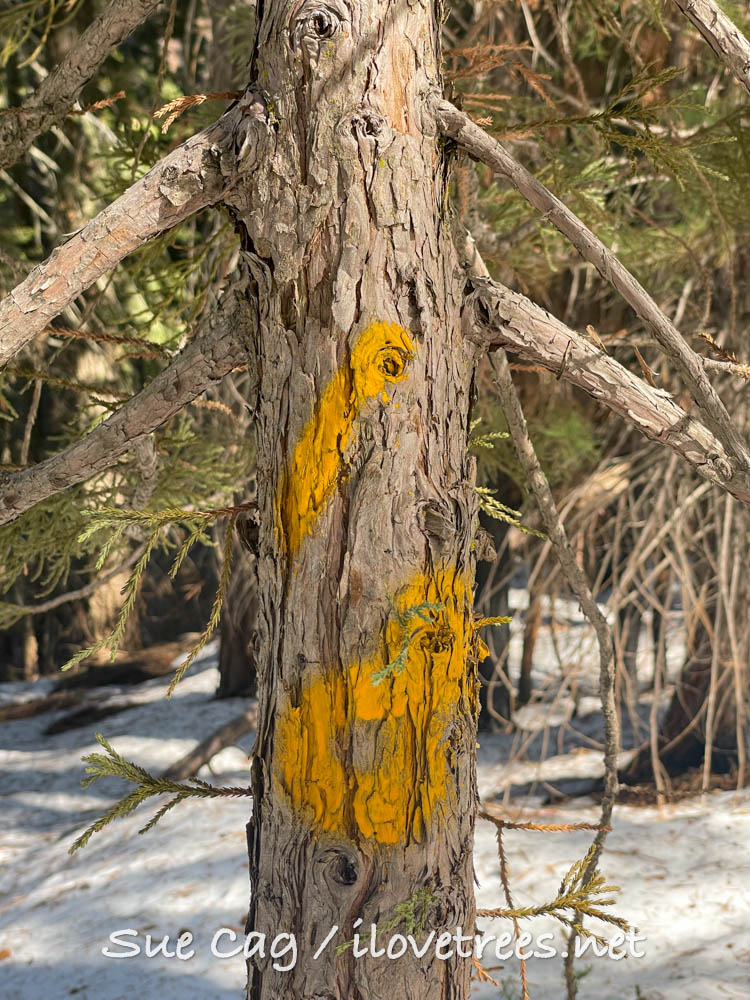
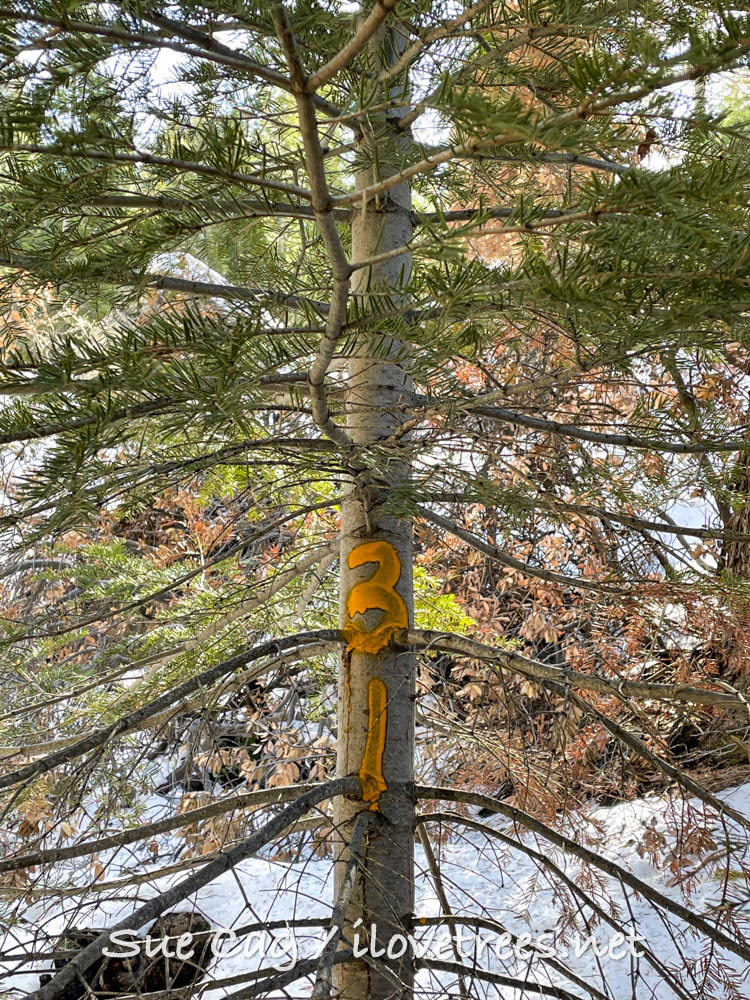
![]() About the Author:
About the Author:
Sue Cag is a musician, artist, writer, photographer, and nature preservationist.
All photos and video by Sue Cag. All Rights Reserved. Photos and video may not be used without permission.

